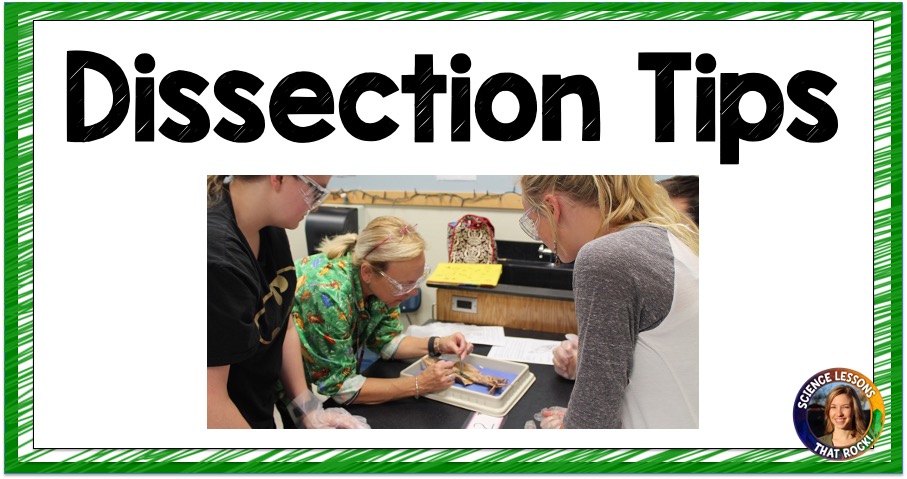
Dissection days can feel really stressful (especially when you are a newer teacher), but they don’t have to be! If you have prepared your students well, the day will run smoothly. Students should walk into the lab knowing exactly what your expectations are for lab behavior, what they will be looking at, and what they need to accomplish by the end of class.
Here are some tips to help your day run smoothly:
- Send home permission slips to parents before students can dissect. Parents should be aware that their child will be dissecting that day, and have a right to decline. If you don’t get parent permission, you will need to have an alternative assignment ready (like a virtual option, which you can find at the end of this blog post).
- Make sure you have had students and parents sign a lab safety contract at the beginning of the year. If they didn’t, now is the time. Make sure students know the consequences if they break the contract.
- Hype it up! Dissection should be a privilege they look forward to. When students have behavior issues, remind them that if you can’t trust them to behave, they don’t get to dissect.
- Have students prove they are ready. This may look like passing an organ quiz and/or showing they know how to properly use dissection equipment.
- Assign lab partners. I think this is especially important if you teach middle school. If you let students pick their own lab partner they will choose a friend and tend to get off task.
- Do you have short class periods? You can do your dissection over 2 or 3 days if necessary. To do this, at the end of the class period have students wrap a wet paper towel around your specimen and place them in a ziploc bag. Have them label their bag and place them in a bin or container they can return to the following day. Note: This is the case if you ordered PRESERVED specimens, not if you used fresh specimens.
- If this is your first time dissecting or you haven’t dissected since college, it’s not a bad idea to complete the dissection on your own before you do it with students.
- Are you providing any reference sheets for students? If so, laminate them or slide them into page protectors so you don’t have to worry about keeping them clean and dry.

A FEW WORDS OF CAUTION:
- Make sure dissection meets one of your standards. Please do not have students dissect just because it is something fun for the end of the year. If body systems aren’t in your curriculum, save dissection for the life science teacher.
- Order preserved specimens if you can. Yes, many butcher shops will gladly give you a cow heart or eyeball, but you have increased safety hazards to worry about. If you choose to get fresh specimens from a butcher, the shelf life is MUCH shorter (a couple days in the fridge) so be prepared to use them fast.
- Know how to properly dispose of the specimens when the dissection is over. Check with your vendor to see if they can be placed in the trash or if you need to have your district get biohazard pickup.
DISSECTION ALTERNATIVES
Maybe you aren’t comfortable with doing a live dissection, or maybe you have a very limited budget and aren’t able to order enough specimens for your classes. Here are a couple alternative options:
- Try a paper version. My friends Mel and Gerdy have some awesome paper models on TpT that you can find here.
- Tight budget? Think out of the box on inexpensive things students can dissect. This could include flowers (great for reproductive system), chicken wings from the grocery store (great for musculoskeletal system), or earthworms (great for digestive system).
- Looking for virtual options? Here are a few:
- Check out a virtual human autopsy here
- Check out a virtual frog dissection here
- PBS has a ton of video tutorials here
- Here is an interactive grasshopper
- Here is a virtual owl pellet dissection
- If your department has a decent sized budget, you can check out this SynFrog. It is a synthetic frog that is chemical free and reusable (you can order replacement organs). I have used one and they really do feel like a real frog, but they aren’t cheap.
I hope this helps, and I hope you have a safe and smooth dissection day!
Rock on,







